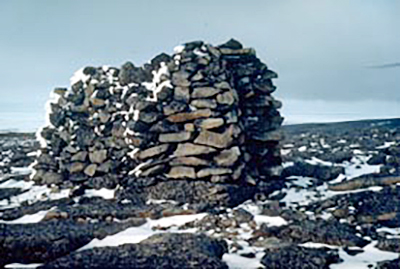
Culture and history
Qausuittuq National Park
It was early September 1953 when we were deposited at what is now the community of Resolute. It was cold and dark compared to our home in Hudson Bay. We had no idea how we would survive. We did not know what animals were there. Somehow we made it through our first winter living on seal and polar bear. We desperately missed caribou meat. In March of the second winter, five or six hunters managed to get the equipment to travel to Bathurst Island. Our escort family from Pond Inlet told us there might be caribou and how to get there. The hunters came back in about a week carrying eight caribou! I was a child then, but remember how great it tasted and how excited the adults were. Ever since we called it "the place where you hunt caribou". Those caribou saved our lives in more ways than one. Now it is our turn to protect them.

The name Qausuittuq (pronounced Qow-soo-ee-tooq) means “place where the sun doesn't rise” in Inuktitut, in reference to the fact that the sun at this latitude stays below the horizon for several months in the winter.
Qausuittuq’s rich and awe-inspiring environment has sustained Inuit for thousands of years. Archaeological studies have found evidence of human use on Bathurst Island dating back 4,500 years.
Pre-Dorset, Dorset, and Thule Inuit cultures were present in the area, although most sites are to the south or the east of the national park. Within Qausuittuq National Park, there are several archaeological sites relating to the Late Dorset culture (ca. 500 to 1200 AD) along Bracebridge Inlet. Human presence fluctuated with changes in climate, ice cover and the corresponding availability of wildlife for subsistence.
Beginning in 1819, a series of British naval expeditions in search of the Northwest Passage explored in the Bathurst Island area. Later expeditions came searching for HMS Erebus and HMS Terror, Sir John Franklin’s ships that disappeared after 1845. Between 1850 and 1854, naval search parties put up cairns and supply depots on the islands north of Bathurst Island, within Qausuittuq National Park, including an impressive cairn on Helena Island.
Exploration in the Bathurst Island area continued into the twentieth century. Captain Joseph-Elzéar Bernier led three expeditions between 1906 and 1911 with the goal of establishing Canadian sovereignty over the Arctic islands. Other Canadian government expeditions followed, including RCMP patrols, RCAF magnetic pole research flights, photography over-flights, as well as surveys of wildlife, geology and hydrology. The 1960s and 1970s brought exploratory drilling for oil and gas and minerals to the area. Various research projects continue to this day, many supported by the Polar Continental Shelf Program.

The community of Resolute, located on Cornwallis Island to the southeast of the national park was established in 1953. Inuit from the community still travel the land and waters of the Bathurst Island area to hunt, fish and trap. Use of wildlife by Inuit has been an integral part of the ecosystem for centuries and Inuit have the right to continue subsistence harvesting activities within the park.
- Date modified :